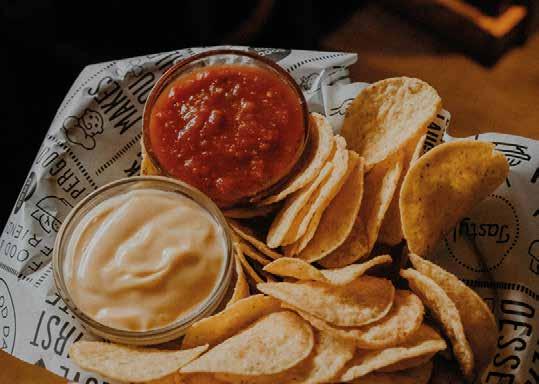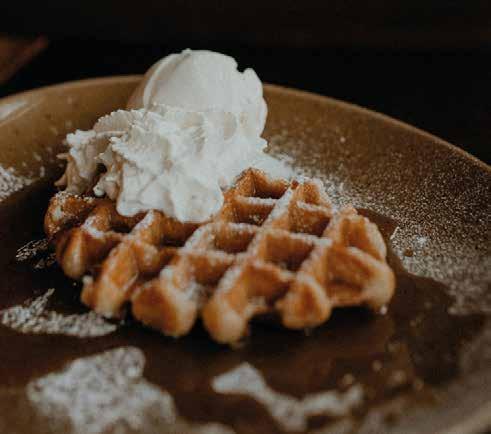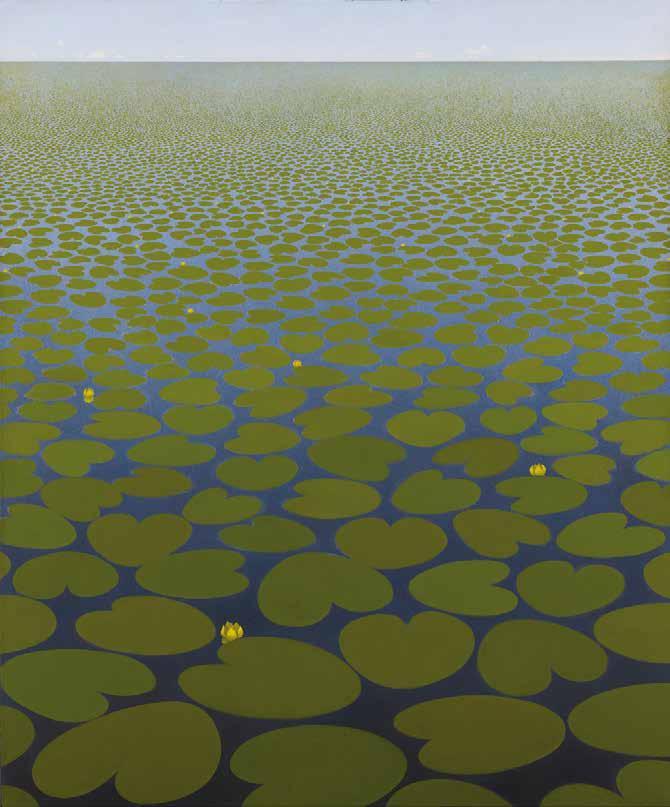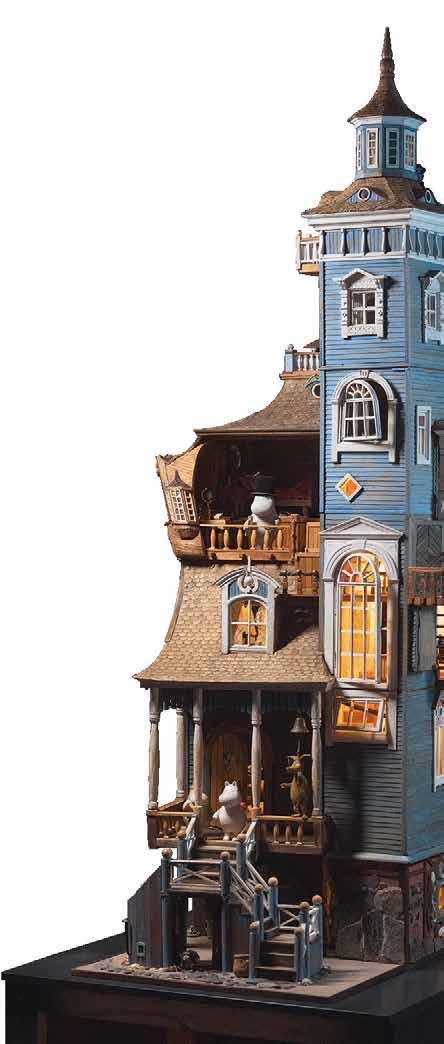












Tampere is the perfect destination for a blend of relaxation and adventure. Whether you’re seeking a relaxed weekend getaway or an action-packed holiday, this Finnish gem has something for everyone. Feel the city’s relaxed charm as you wander amidst historic red-brick buildings.
Discover nature activities, captivating museums, and indulge in local cuisine, such as at Tampere Market Hall. Surrounded by two beautiful lakes and diverse natural landscapes, Tampere seamlessly combines urban excitement with serene nature views for a unique holiday experience.
What makes Tampere truly special is its cultural richness, including the world’s only Moomin Museum, a vibrant events scene, and of course, its title as the Sauna Capital of the World, embodying peace and relaxation year-round!
Experience the best of urban life, culture, and outdoor adventures in Tampere!

Share your favourites on social media with #VisitTampere
Check out more at visittampere.com
Embark on a culinary journey
Taste local flavors at the Tampere Market Hall or enjoy a meal or drinks at one of the city’s great restaurants.
Find culture experiences for every taste
Tampere is known for its vivid cultural life. The city is famous for its theatres, live music and various festivals. All kinds on summer events awake the city centre during summer. Additionally, Tampere is quite possibly the most interesting city of diverse museums in Finland themed museums from art to police and from spies to history of labor offer exploring for every taste.
Admire Tampere from above
Enjoy panoramic views from Moro Sky Bar, Näsinneula and Pyynikki observation towers or roof walk on top of Finlayson area.
Explore the architectural sights of Tampere
The Tampere Cathedral, Main Library Metso and the Tampere Main Fire station introduce you to the Finnish architectural history, alongside with the development of the city. The newer architecture can be admired around Nokia Arena and Tammela Stadium.
Dive into the history of Tampere
Visit the Labour Museum Werstas in the Finlayson area and enjoy the old times charm at the Tallipiha Stable Yards. Don’t forget to visit the Milavida museum to hear about the factory owner’s life.
Sweat it out in the Sauna Capital
Since 2018 Tampere has been known as the Sauna Capital of the World. Try for example, Sauna Restaurant Kuuma right in the city centre, Rauhaniemi or Kaupinoja by the lake, or the oldest public sauna still in use, Rajaportti. Discover the authentic Finnish sauna experience compare the differences!


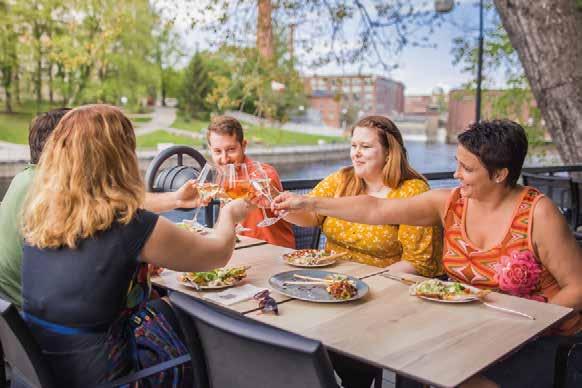

Enjoy the great outdoors by the lakes
Spend a summer day on Viikinsaari island, take a scenic cruise on the lakes or rent a SUP-board or canoe. Hop on the tram to enjoy the nearby nature right outside the city or hop on the Outdoor Express shuttle bus which takes you to region’s national parks.
Explore with the family
The theme park Särkänniemi offers a great variety of amusement rides for both adrenaline seekers as well the ones enjoying more of a peaceful ride. There’s something for the whole family in Vapriikki Museum Centre, too! Visit Finnish Museum of Games and Hockey Hall of Fame, among other interesting exhibitions.
Discover second-hand, vintage and designer finds
Tampere has a lot of boutiques selling quality vintage and second-hand clothes and items. Explore the city’s design gems as well!
Join the Moomin 80 celebrations in the hometown of the Moomin Museum
The first Moomin tale, The Moomins and the Great Flood, was published 80 years ago, in 1945. The hometown of the Moomin Museum, Tampere, celebrates the anniversary throughout the year. Join the celebrations and discover home of the Moomin Museum.
EXPERIENCE
SHOWCASES TAMPERE FROM a NEW PERSPECTIVE . walking route ON the TOP OF THE CITY INCLUDE STUNNING SIGHTS AND HISTORICAL STORIES .

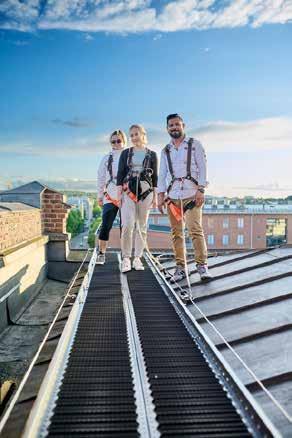

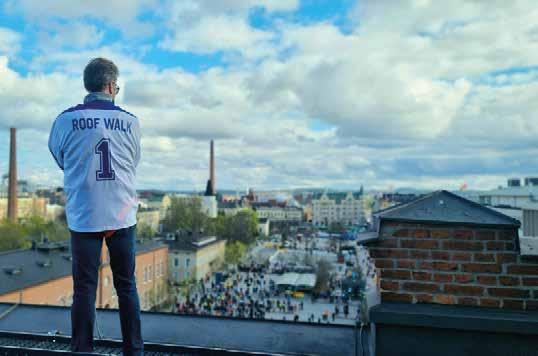
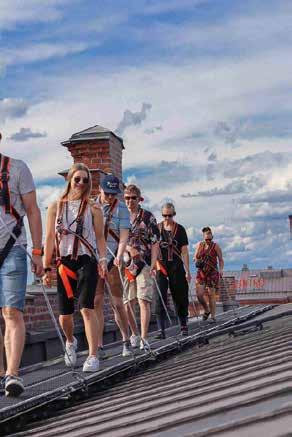




The most attractive centre of Finland 8 Like an adult amusement park 10 A surrealist on the ski jumping hill 12 The policeman who could write 16 Tampere in a nutshell 20

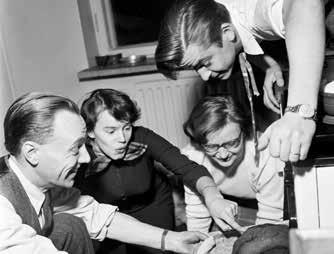
Tampere Times Magazine for Visitors Issue 1/2025
Summer www.tamperetimes.fi
ISSN 2343-3817 (print)
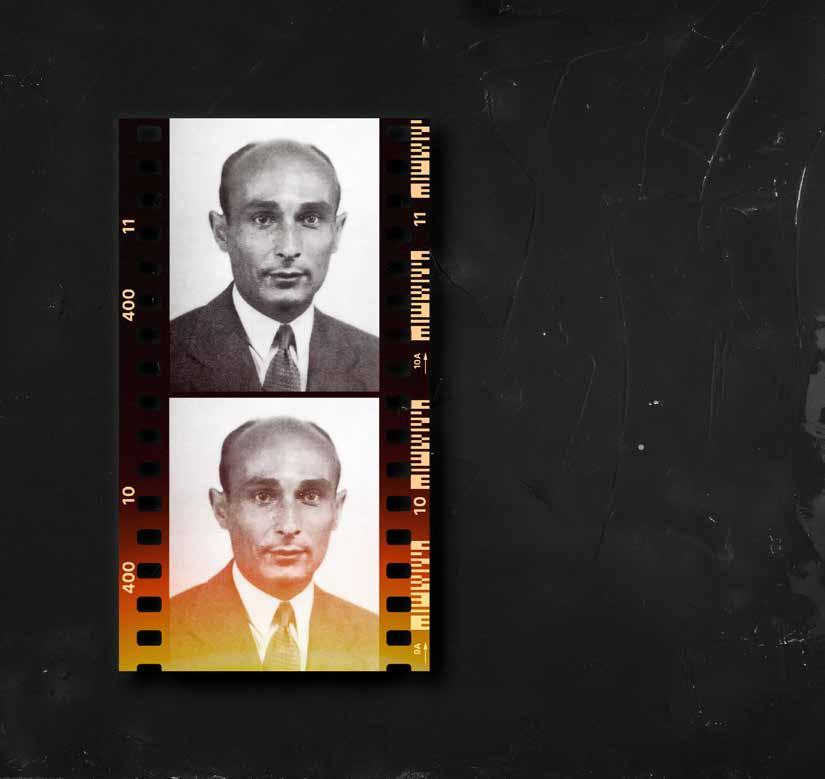
ISSN 2669-8293 (online)
Graphic design & layout
Petteri Mero
Mainostoimisto Knok Oy
Tel. +358 45 656 7216
Sales manager
Kari Kettunen
kari.kettunen@aikalehdet.fi
Tel. +358 40 481 9445
Media Association (Aikakausmedia)
Publisher Teemu Jaakonkoski
Printed by Newprint Oy
Tampere City Centre
Photo: Mikko Vares / Visit Tampere Sunset in Tampella
Photo: Laura Vanzo / Visit Tampere
Pop-up tourist info
Photo: Laura Vanzo / Visit Tampere
Family fun at Rauhaniemi sauna.
Photo: Laura Vanzo / Visit Tampere
Hannele Lampela.
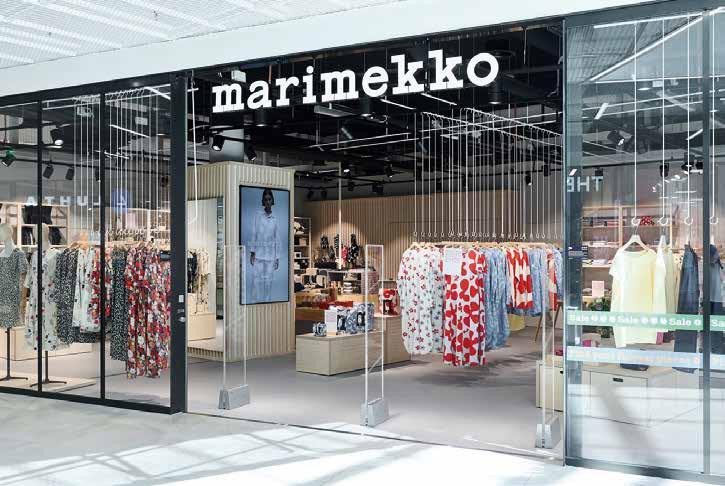
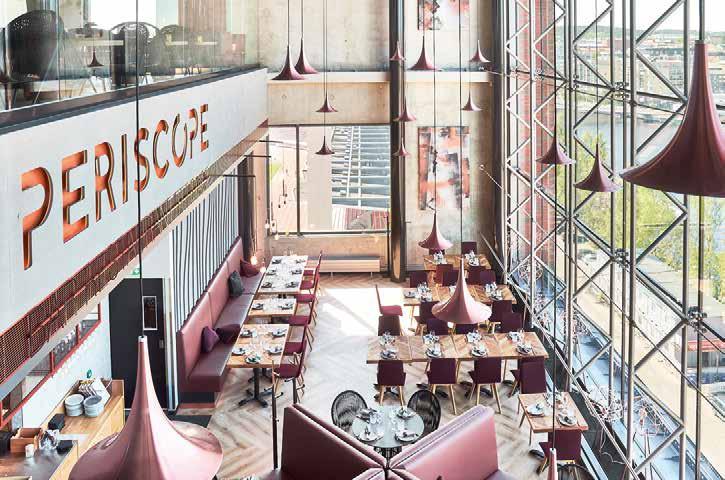
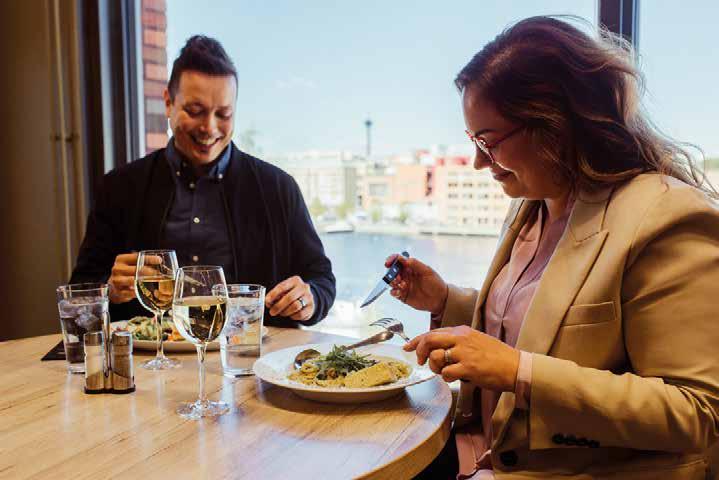
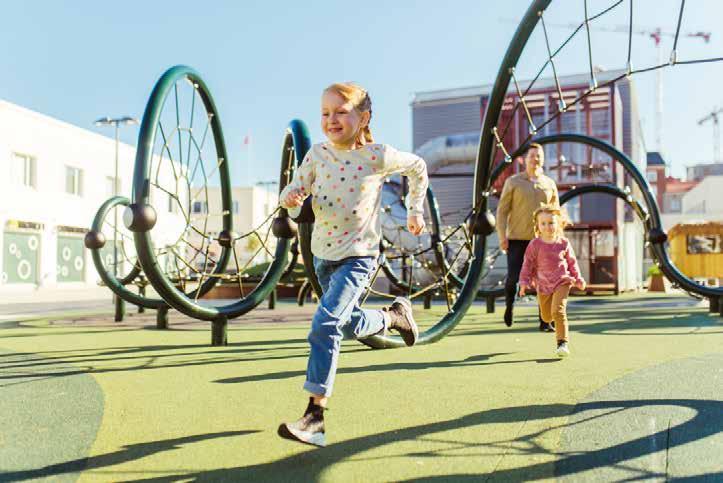

Moomin themed nursing room and play area
Mini-Ratina
Over 100 shops and the best brands in Tampere! Food, fashion, beauty, home decor & much more!
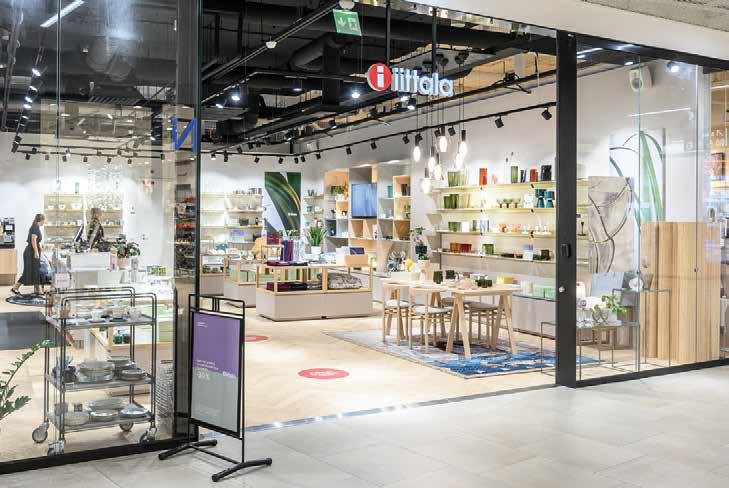

Tampere is Finland’s most beloved city, consistently ranked as the country’s favorite. With a vibrant atmosphere, strong cultural heritage, and stunning natural surroundings, Tampere has something to offer visitors in every season. The city is home to more than 260,000 residents and has been growing at a record pace. More than 160 languages are spoken here, making Tampere an increasingly international hub for both residents and visitors.
Tampere’s charm lies in its unique blend of urban life and natural beauty. Located between two breathtaking lakes, Näsijärvi and Pyhäjärvi, the city offers an urban environment deeply connected to nature. Whether exploring historic red-brick factory buildings, hiking in accessible forests, or enjoying lake cruises, there is plenty to discover in every season.
As the snow melts and nature awakens, Tampere comes alive with the vibrant colors of spring. This is the perfect season for outdoor enthusiasts to explore Pyynikki, where the trails offer panoramic views of the city and lakes. The Pyynikki Observation Tower is a must-visit, not only for its views but also for its famous freshly baked doughnuts.
With summer in full swing, Tampere transforms into an active and lively destination. The city’s festivals, events, and outdoor activities attract visitors from near and far. Särkänniemi amusement park offers fun for all ages. A visit to Näsinneula, Finland’s tallest observation tower, offers breathtaking panoramic views of the city and lakes.
For culture lovers, Tampere’s museums and theaters provide rich experiences. The Amuri Museum Quarter showcases 19th-century working-class homes, while Vapriikki Museum Centre features exhibitions on history, science, and technology. The world’s only Moomin Museum invites visitors to step into the whimsical world of Tove Jansson’s beloved characters.
Those looking to enjoy Tampere’s famous sauna culture will find options for every taste. The historic Rajaportti Sauna in Pispala is the oldest public sauna in Finland, while modern lakeside saunas like Kuuma in the city center and Rauhaniemi Folk Spa offer a relaxing experience in a stunning natural setting.
Tampere is not only a city of natural beauty but also a hub of entertainment and sports. Home to two top-tier hockey teams, the city hosts thrilling matches at the Nokia Arena. The Tammela Stadium is a must-visit for football fans, while lake tourism and summer boat routes on Näsijärvi and Pyhäjärvi provide a peaceful retreat on the water.
Food lovers will find plenty to savor in Tampere. The city is famous for its black sausage (mustamakkara). For a casual bite, Vaakon Nakki has been serving legendary street food since 1962. Local markets like Tammelantori and Laukontori offer freshly baked buns and coffee, making them perfect spots for a delightful afternoon.
Tampere’s success story is built on a long tradition of innovation, culture, and community spirit. Whether you visit in the vibrant summer months or during the enchanting winter season, Tampere promises unforgettable experiences.
Welcome to Finland’s most attractive city – where history, nature, and modernity come together in perfect harmony!
Kalervo Kummola Mayor of TaMpere
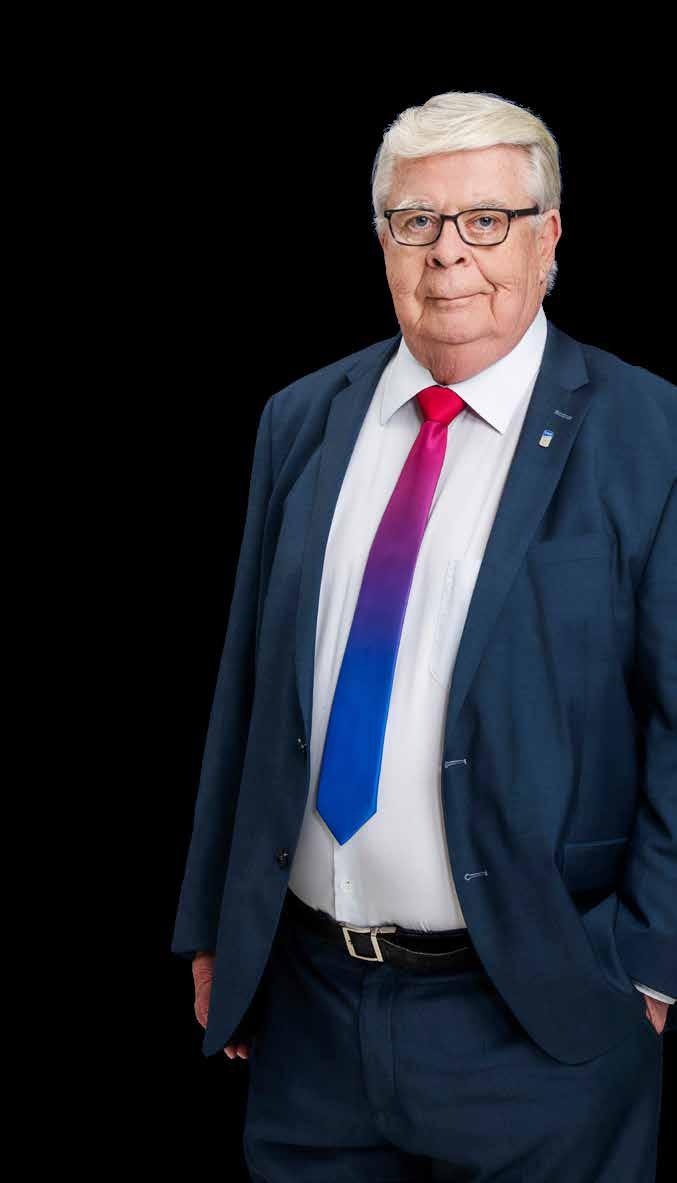
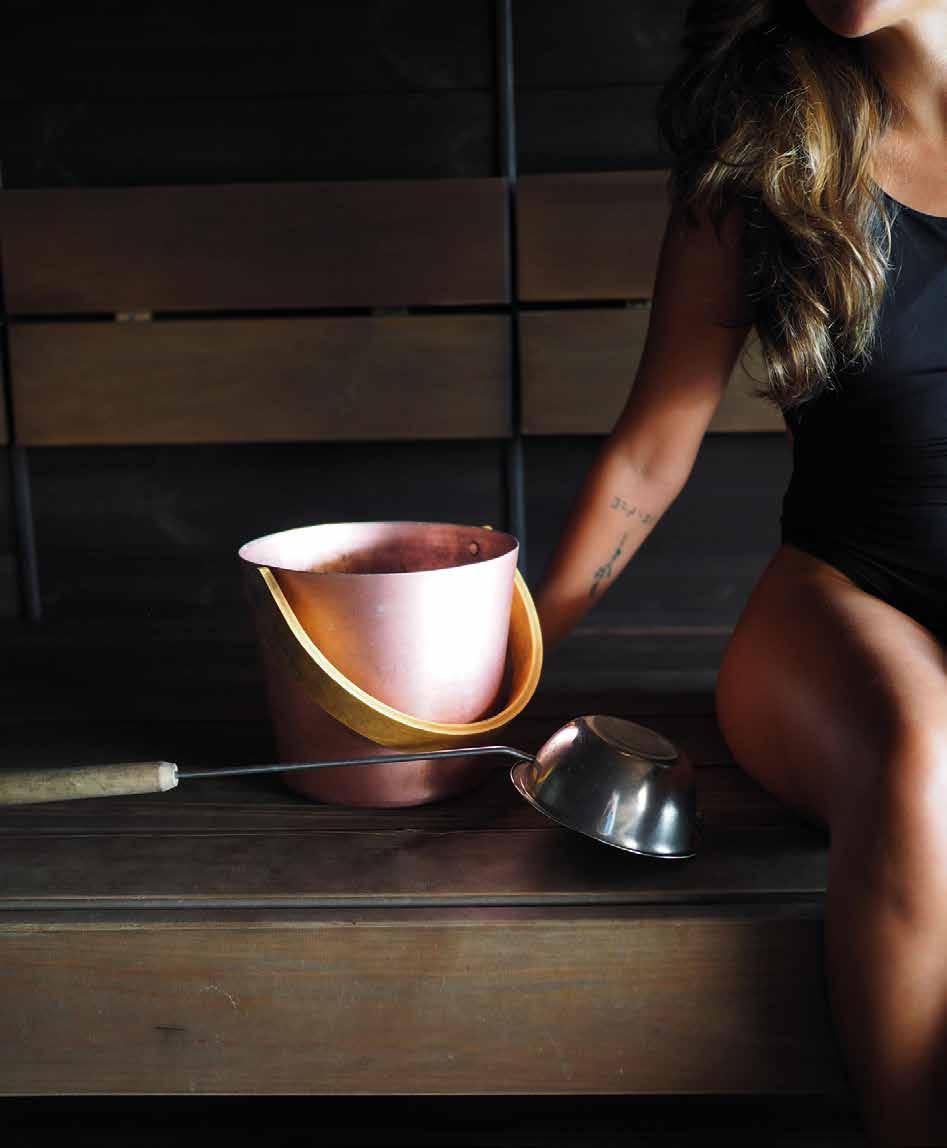




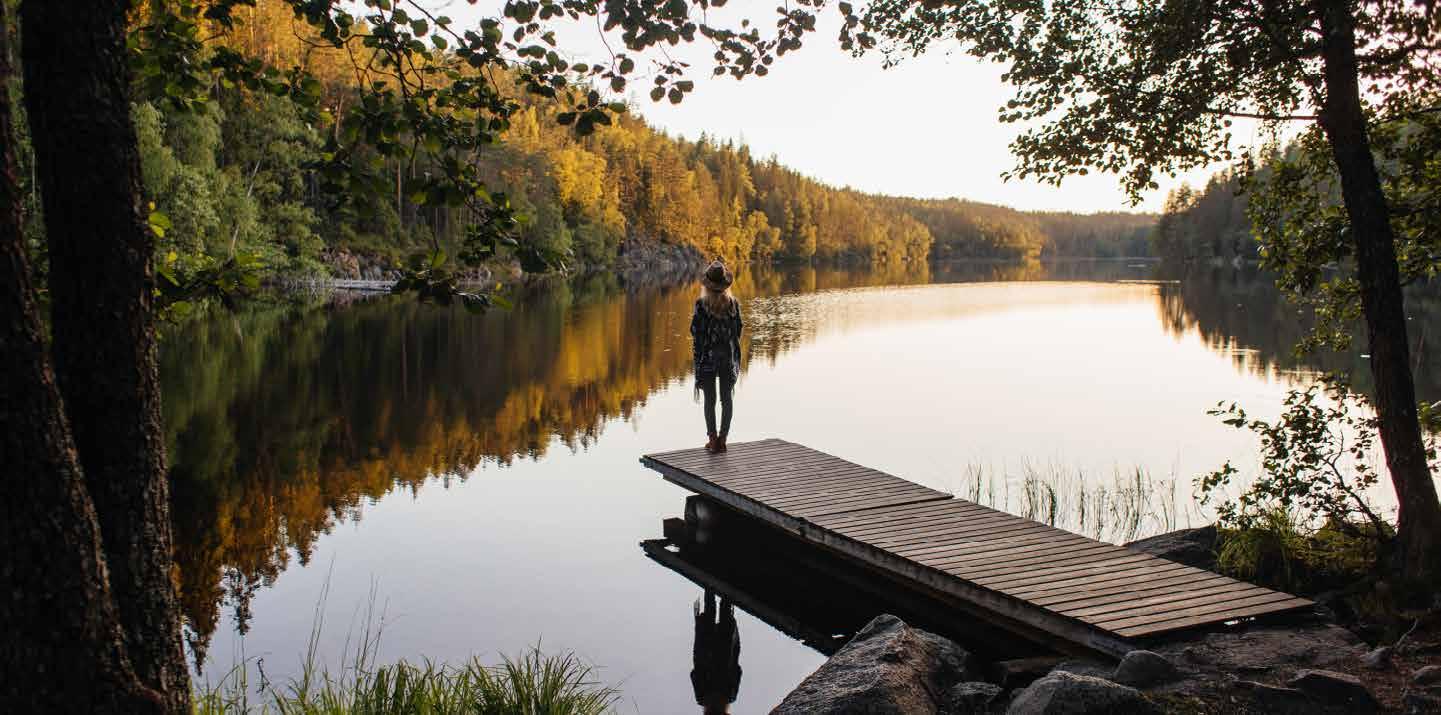
Well, life goes on, and there’s nothing that says you can’t visit the same natural site twice. In any case, it was a wonderful experience:
“I saw more Finnish nature than I ever would have otherwise. And on top of the natural sights, I got to visit a lot of cities and places that I otherwise probably never would have. Another great thing was that I got up the nerve to ask friends to come along. People suggest going for coffee all the time, but it was kind of a big deal to ask somebody if they wanted to go to a bog with me. It deepened a lot of friendships, and of course my own relationship with nature – I read a lot of nature literature.”
Originally, Carlson had a rule that she could check off a park if she had hiked at least ten kilometers there. Sometimes the trip could take a week, even.
“But some national parks are so small that you can’t really cover ten kilometers without walking in a circle. So what I did was choose the nicest route, even if it was shorter. The deciding factor could be something like a nice swimming spot along the way. I might also spend part of the day just reading a book on an outcrop of rock.”
Carlson says that for her, as a middle-aged person, hiking was a big deal at first, physically speaking:
“I had never done anything like that before, and I had never been particularly physically active. But I managed, and it was fun! I’m now on a bit of a mission to make the experience possible for others. I know a lot of women my age who would like to experience something like this but don’t dare do it alone. The intention is to organize at least a couple of trips for a slightly larger group.”
Carlson has a clear favorite among the national parks: Urho Kekkonen National Park in Lapland.
“Partly because it was my first, back in 2015. It was like an adult amusement park. It was hard to believe how much fun it was! And the place is beautiful. There are forests, lakes, ponds, fells – everything that Finnish nature can offer. We stayed overnight in backcountry huts, and it gave me the same sort of feeling as being in a library – that somebody put this here for me, and it’s free!”
A national park is a nature reserve whose primary purpose is to safeguard biodiversity. Each park represents a typical Finnish natural environment at its best, from the fells to the archipelago. The parks’ hiking trails are designed and maintained to guide visitors through the landscape in a nature-friendly way. You can stay overnight in tent camping areas, lean-tos, backcountry or rental huts, or in accommodations provided by private companies.
Finland’s first national parks were established in 1938, but their existence has only really been promoted since the 1970s. Today, there are 41 national parks in Finland, and they are located all over the country. The closest national park to any larger city is usually no more than an hour’s drive away. If you can’t make a trip to an actual national park, there are smaller nature trails in every city and municipality. They offer another convenient way to explore the Finnish forest.
For more information about Finland’s national parks, visit: www.luontoon.fi/en
The trails in the national parks are so well marked that it’s practically impossible to get lost. Every park has something special about its natural environment, though for the most part, you’ll have to be content with observing the vegetation because you’re unlikely to come across any larger animals:
“They know how to stay out of sight of people. In Lapland, I did see birds that we don’t have in the south, like willow grouse and Siberian jays. And when I was in the north for the first time, I was impressed by even ordinary animals, like reindeer. I wouldn’t be as thrilled by seeing something like that in quite the same way anymore.”
No special hiking equipment is necessary, at least not if you’re only going for a day:
“It’s worth having good shoes. I personally love my hiking boots – my husband thinks I use the word ‘love’ quite freely – but even regular sneakers are enough. And of course, it’s a good idea to take some snacks too! And a good friend. Though it can also be nice to hike alone!” s

A Finnish gallerist has added a jumping suit worn by legendary ski jumper Matti Nykänen to his collection because, in his opinion, Nykänen was the most surrealistic athlete in the world.
The ArT BanK gallery, on the island of Pargas in the Turku archipelago, houses the only private exhibition of Salvador Dalí works in the Nordic countries. Gallerist Ted Wallin, who has in numerous interviews assured incredulous journalists that he is the reincarnation of Dalí, has now acquired for his collection a jumping suit that ski jumper Matti Nykänen wore at least during a Four Hills Tournament in the 1980s. According to an interview with Helsingin Sanomat (6 February 2025), Wallin had a clear motivation: “Nykänen
A comment from the beginning of his singing career is so surrealistic that even Dalí would have been proud to hear it: “The album is already recorded. Next, I’m going to take singing lessons.”
was the most surrealistic athlete in the world. We [surrealists], after all, cultivate a slightly-more-than-reality feeling.” He has a point, though the competition for the title of the world’s most surrealistic athlete is fierce. What makes Nykänen more qualified for the title than, say, larger- and stranger-than-life figures like Diego Maradona and Dennis Rodman?
Nykänen’s particular strength is his wide-ranging surrealism. He resembles Salvador Dalí in that a total work of art includes not only one’s artistic production, but also the artist’s personality and, in practice, everything he does. The Dalí Theatre and Museum, which Dalí built in Figueres, Spain, and opened in 1974, uses paintings, sculptures and various decorative objects to create an assemblage that depicts Dalí and his art, with each room also featuring an independent work of art.
The artwork created by Nykänen’s life is performative (although a monument entitled Höyhen, ‘Feather’, has been erected for Nykänen in his hometown of Jyväskylä), a story that bounces in different directions in an almost dreamlike (and sometimes also nightmarish) way, like the legendary film Un Chien Andalou made by Dalí and Luis Buñuel. The story begins with an incredible sports career (ten gold medals from the Olympics and World Championships between 1981 and 1990, plus 48 World Cup wins and four overall victories), during which he made headlines not only for his sporting achievements but also for his colorful personal life. The peak of his kiosk break-ins and other drunken antics was his winter 1987 “training camp” in Spain: Nykänen, after a dispute with the Finnish Ski Association, goes south for two weeks to party, returns for the World Championships and wins silver.
After his sports career, Nykänen followed Dalí’s advice that if you want people’s attention, you have to provoke them, and he worked as both a striptease dancer and a pop singer. A comment from the beginning of his singing career is so surrealistic that even Dalí would have been proud to hear it: “The album is already recorded. Next, I’m going to take singing lessons.”
Nykänen’s steadily worsening alcoholism ultimately turned his epic-turned-comedy into a tragedy. At first, Nykänen’s domestic and other violence brought him suspended sentences, until the drunken stabbing of a male acquaintance brought him a prison sentence of over two years in 2004. Nykänen’s life ended in 2019. He was only 55 years old at the time.
In a new documentary by Olli Laine, Nykänen’s sister Päivi sums up his tragedy as follows: “The gift he had was too great for him to bear.” The weight of Nykänen’s burden is all the more evident considering that Nykänen was only diagnosed with ADHD as an adult, and that not only journalists, fans and managers, but also officials from the Finnish Ski Association more often took advantage of, mocked or enabled Nykänen’s destructive behavior than acted as his friends or supporters. Perhaps he would have even endorsed Dalí’s words: “It is not me who is the clown, but this monstrously cynical and so unconsciously naive society, which plays the game of seriousness in order better to hide its madness.”
In addition to his sporting success and his ultimately sad life story, Nykänen is especially remembered for his one-liners, which in their absurdity and funniness rival those of Dalí. For example: “The greatest tragedy of today’s youth is that I’m not one of them anymore.”
A few of Nykänen’s best: “Life is the best time to be alive” / “Love is like a ball of string – it begins and it ends” / “Germany-Austria is my second homeland” / “Having experienced everything, I can say that there are still things left to experience.” And one more, which meets the demands of surrealism’s main theorist, André Breton, by effortlessly brushing aside the shackles of logic and limitations of everyday reality: “You can’t undo what you haven’t done.”
Finally, it’s worth remembering that ski jumping itself is a surreal sport, in which you fly on skis for a distance that can top 200 meters down a hill. Perhaps the most incredible performance of Nykänen’s career was at the 1982 World Championships in Oslo, where on the last day of the competition, the large hill was shrouded in a dense blanket of fog. Any sane person would have thought the competition should be canceled, but the officials decided otherwise. Many jumpers fell or landed their jumps dozens of meters shorter than normal. Nykänen, on the other hand, set off from the top of the jumping hill (as if determined to prove true the famous quote of Dalí’s, “The only difference between me and a madman is that I’m not mad”), briefly emerged from the fog at the take-off, and flew unseen to the bottom of the hill, where he materialized again and won gold. That jump was like something straight out of Salvador Dalí’s restless dreams. s




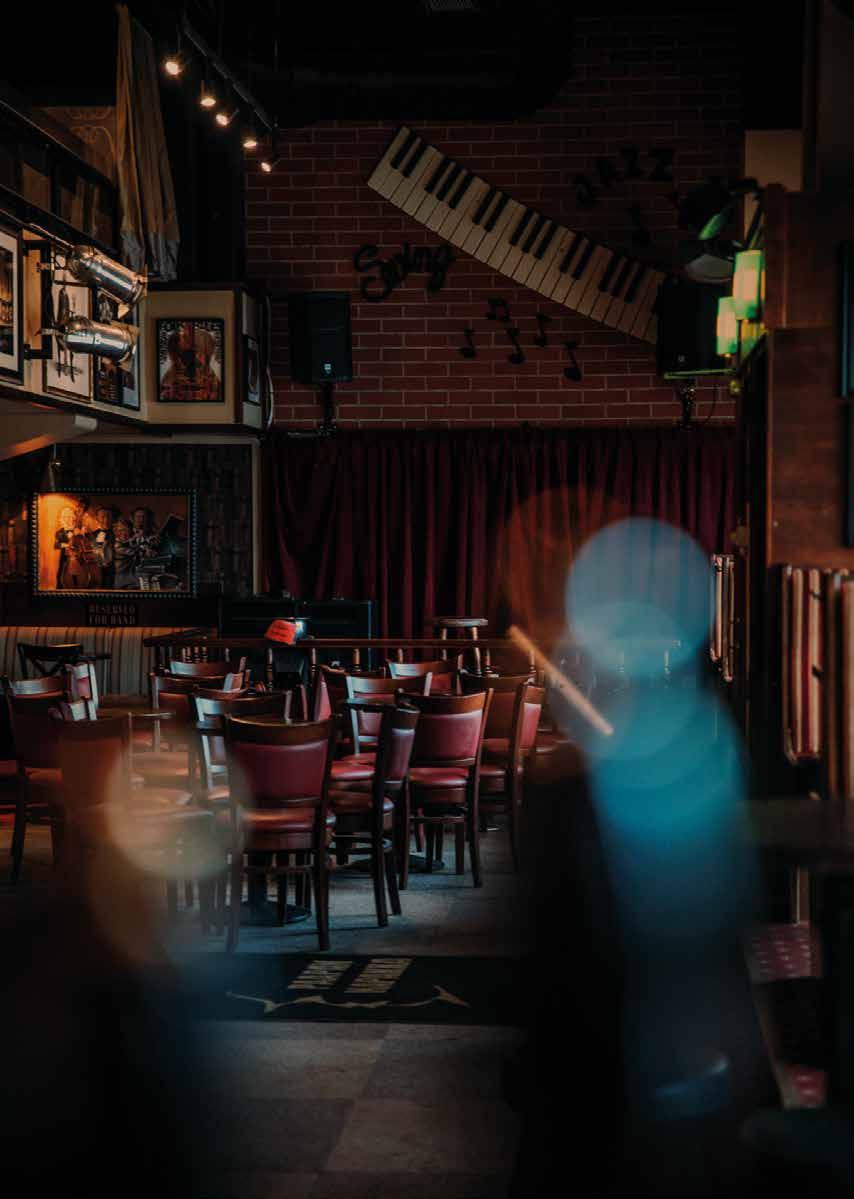

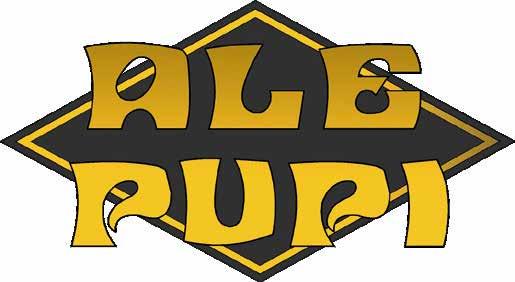
There is one downside, however, for a police officer who becomes a detective novelist:
“I can’t take shortcuts with credibility. I can’t just make my characters do whatever kind of fantastic stunts. Everything has to be plausible and possible. The register I write in doesn’t allow for things to go in a way that they really couldn’t.”
For example, there is a scene in one of his books where a person in a bulletproof vest is shot to death on a golf course with a compound bow and target-shooting arrow. Rönnbacka had to try it out and discovered that an arrow like that wouldn’t penetrate a bulletproof vest. So the victim in the book was killed by a direct shot to the head.
Detective writers often think their plots through to the last detail before they actually start writing. Rönnbacka is an exception here too:
“I live from hand to mouth. I tell lies at the keyboard for a day, and then I see where it leads.”
That is how police work is done, after all: slowly moving forward as new information becomes available. For Rönnbacka, an important aspect of a story is its editing – in a cinematic sense. How much should be revealed? In any case, the reader always knows more than the characters.
“Readers are also smart and have imaginations. That’s why I only describe what I have to for the purposes of the plot. And Stieg Larsson taught me not to touch local politics, even with a ten-foot pole. They’re so boring.”
“It hasn’t become a global hit yet, but let’s wait and see! It’s fun to make a book with the hope that the person listening to it falls asleep.”
Liquor, that fuel that drives writers’ souls, is also close to Rönnbacka’s heart. It’s not that he’s a drinker, per se, but he has established an entire gin brand and distillery.
Its name is Authors’ Distillery, and there are other authors involved too, but the idea was originally Rönnbacka’s. He was writing a whisky book about Finnish distilleries and fell in love with the atmosphere, stories and people – and wanted something similar for himself.
“Making whiskey is so slow that it takes a long time to get your money back. But gin is ready faster. I got a good group together, and we thought about what the company’s story should be. We came up with the idea that it’s the writers themselves.” The company was founded in a temperance society building in Helsinki, Rönnbacka says.

This story perhaps best describes Rönnbacka’s method of working:
“Publishers always want to know the title of a book eight months before it comes out. But how am I supposed to know? One time, I was on my way home from a long meeting where they had nagged me about the title of a book, and I heard the song ‘Rafael’s Angel’ on the radio. I decided to use Rafael as the title. So then I thought about what Rafael could mean and decided it was a call sign from the war in Ukraine. I placed a Finnish soldier who had served there in Porvoo, and had him bump into young Sebastian, who was being harassed by roadmen. From there, I started following what would happen when Sebastian wanted revenge.”
Rönnbacka is from Ostrobothnia, and perhaps the traditional entrepreneurial spirit of that region explains why he always has so many different projects going on. One of the most unique has been a bedtime storybook for men. It’s an audiobook featuring recordings of his own idea of pleasant, soothing sounds especially for men. It’s called Nuku Perkele! (Sleep, Damn It!), and it includes, among other things, loading an assault rifle magazine, an idling Land Rover Defender engine, a whittler carving curls of wood, and rifling through a box of fishing lures.
I put an ad in the paper that said we were buying juniper berries. Now I have a juniperium there - kind of like an imperium.
Only after they came up with the story did they start thinking about the product itself. They started with gin, but soon added rum. And since there are also real spirits professionals involved, who actually run the distillery, the gin turned out well:
“We participated in the International Wine and Spirits Competition in London, where there were a total of 1,000 different gins from 700 manufacturers, and Readers’ Gin won gold in the Gin & Tonic category! Our rum, which was less than a year old, received a bronze medal, which is a great showing for a rum that was practically still in diapers.”
Some of the authors’ gins use juniper berries Rönnbacka has shipped from Åland, where junipers grow to excess. The shrub is seen mostly as a weed there, and the berries hadn’t been harvested before. Even Åland’s own distillery wasn’t using them – they ordered their berries from Southern Europe like everyone else.
But now, that’s changed:
“I put an ad in the paper that said we were buying juniper berries. People called and said, great, but how do you pick them? I said I had no idea, but let’s figure it out. Now I have a juniperium there – kind of like an imperium.”
Authors’ Distillery products are available at certain Alko locations. You can also order them online and try your luck at some restaurants. Gin and tonic is close to Rönnbacka’s heart too:
“My body doesn’t believe I’m on holiday until I’ve had a gin and tonic in the hotel lobby bar.” s

The pool is located near the city centre and easy to reach by tram, bus or car. Facilities include changing rooms and showers. There is a cafè where you can enjoy hot and cold beverages, ice cream and snacks.
Warmly welcome!
8000 BC
The connection to ocean from the Tampere region was cut when the ice age was finally over. As the ice melted, the land rose up and the lakes were born – also Näsijärvi and Pyhäjärvi, and little later the Tampere Rapids. A must see attraction from the ice age is Pyynikki, a 90 hectare ridge area, which is almost in the centre of the city. From here there are marvellous views to lake Pyhäjärvi. It is also a beautiful place for other outdoor activities.
Tampere was an ideal place to build a village, because there were good waterways to both north and south. The first signs of permanent living in the area are from the 7th century.
By the 13th century Tampere region had grown, and it was an important market place. It was inhabited by the Pirkka tribe and even today the Tampere province is called Pirkanmaa, “The land of the Pirkka”.

Tampere was not yet an actual city, but in 1638 Finland’s governor Per Brahe ordered two yearly fairs to be held at the the Tampere Rapids. That’s why Turku – the then capital of Finland – and Tampere have got a special connections of fates, for when the whole city of Turku burned in 1827, the damage was so severe partly because all the men from Turku happened to be at the Tampere fair.
The King Gustav III of Sweden finally granted Tampere the full township status. And no wonder, because Tampere was huge: 3.2 square kilometres with population of no less than 200!
1824
The beautiful old church of Tampere was built. The architect was Charles Bassi.
A Scotsman called James Finlayson set up a cotton factory near the Tampere Rapids. It was the first but not last major factory in the remarkable industrial history of Tampere. Finlayson still is a brand every Finn knows. Also from that time on, the use of waterpower from Tampere Rapids became important.
From the 1840’s Tampere became the most industrialised city in Finland. Soon there were factories that made iron, paper, machinery, clothes, shoes and many other things. Even to this day Tampere is sometimes called “Manse”, which comes from the saying that Tampere is the Manchester of Finland.
Tampere is also a vibrant theatre city. The first one, Tampereen Työväen Teatteri – The Tampere Workers Theatre – was established 1901. In 2020 there are over 10 professional theatres in the area.
In 1918 Finland was torn by a civil war with two sides: the “reds” and the “whites”. As a working class city, Tampere sided with the reds (who lost). Tampere saw severe battles, thousands died in war efforts and even more in prison camps.
Finland was in war against Russia, and Tampere was an important centre of war industry. For example Tampella made mortars and cannons. Tampere was also bombed, but luckily there was little damage.
Näsinneula, the high tower that Tampere is famous for, was built. Few years later The Särkänniemi Amusement Park opened its doors.
During the 90’s the heavy industry of Tampere was in trouble. One reason was the collapse of Soviet Union, but all and all the world was changing. The chimneys were no longer active, and the factories shut down. Nowadays they are renovated for apartments, museums and such. Industry in today’s Tampere in mostly high tech.
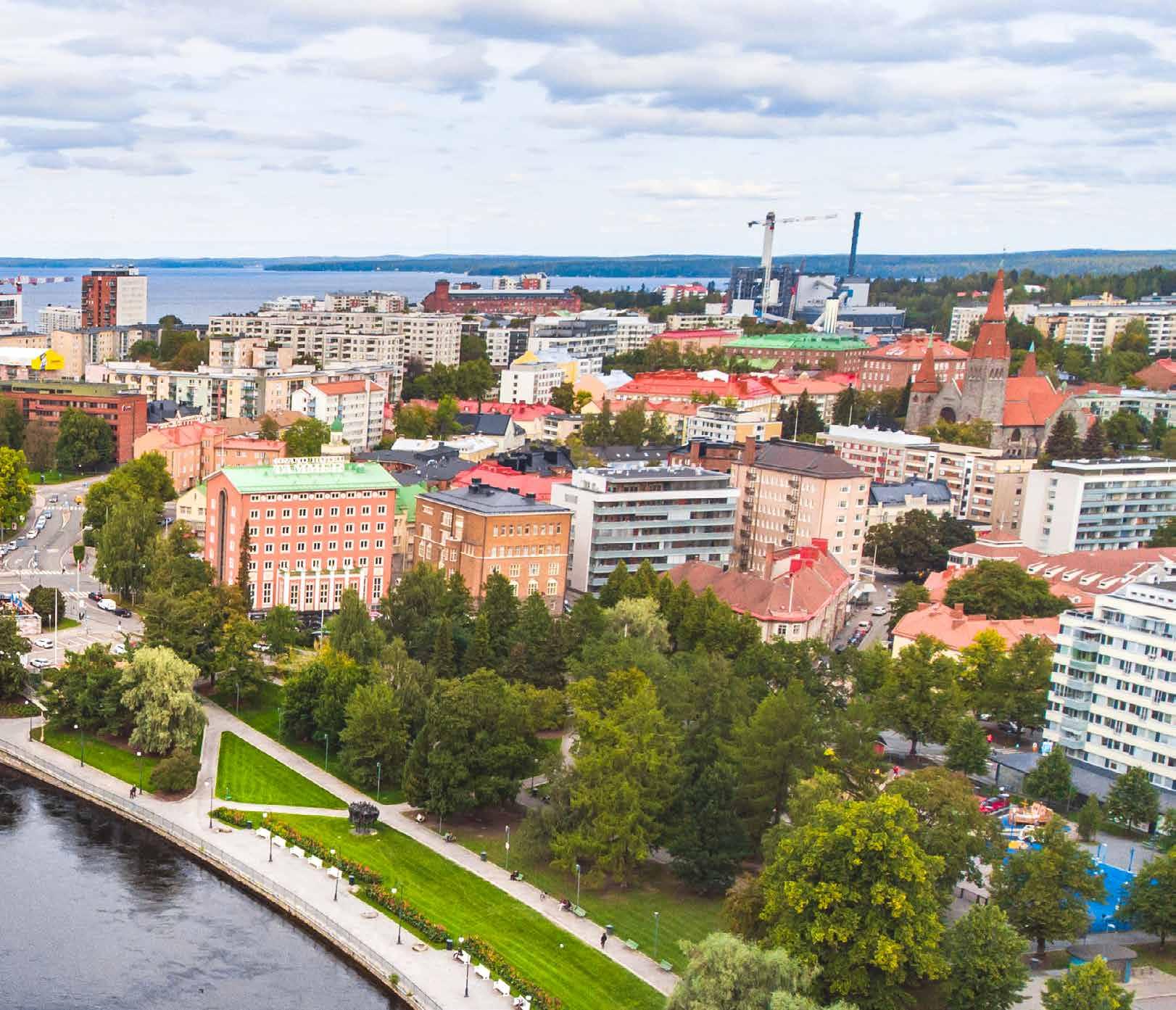
Tampere is the third biggest city in Finland, with 260,000 inhabitants in the city. It has four universities and a very vivid cultural life. Tampere is also a city of vision and courage: the brand new tramway is a good example of that! s
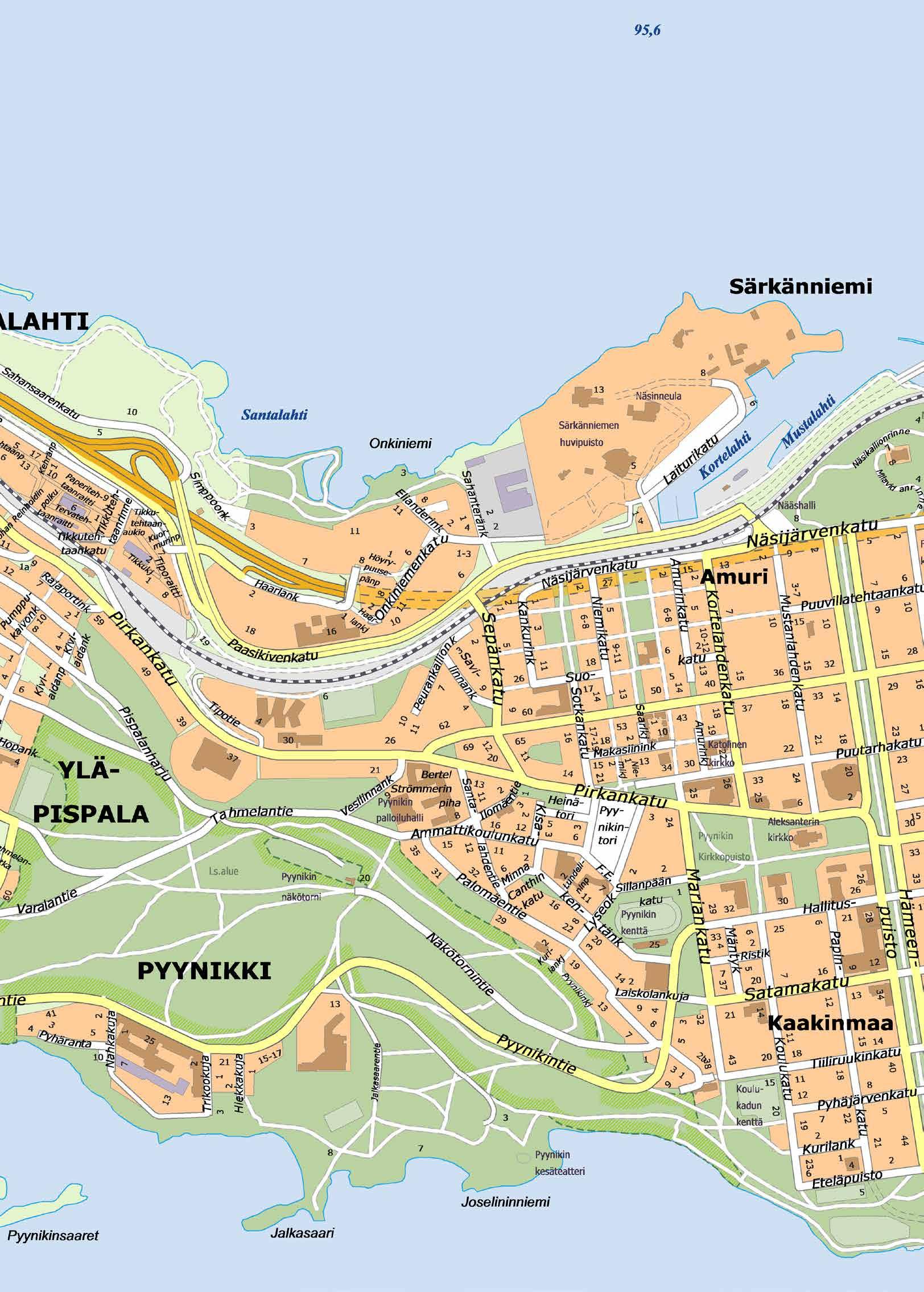

Varmista näkyvyytesi: Puh. 045 656 7216 | Puh. 040 481 9445


We create functional identities and unforgettable brands. So stop hiding and let’s level up your image! www.knok.fi

You can easily pay for your bus or tram ticket using the Nysse Mobiili app or contactless payment. Mobile tickets are also valid for train travel in the Nysse area.
Tickets, routes and timetables: nysse.fi/en
Tampere regional transport
See more on a city bike
Download the Tampereen kaupunkipyörät app, register, buy a pass and start your journey. nysse.fi/citybikes
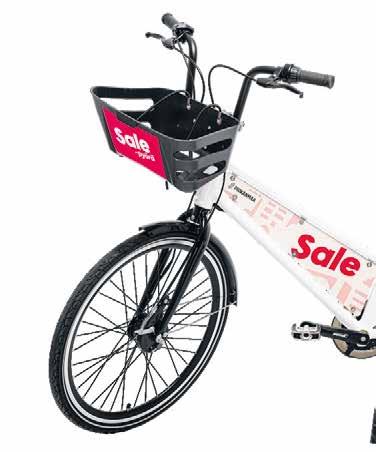




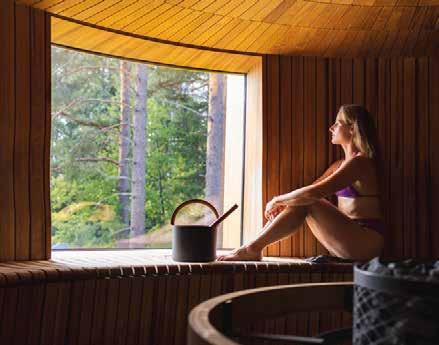
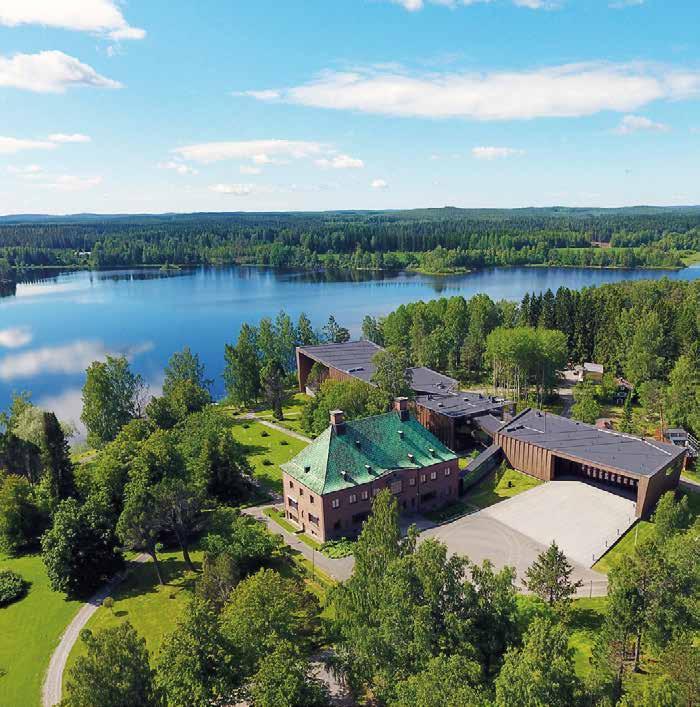


Sometimes the real world beats fiction. At the world’s first Spy Museum, this is true in more occasions than one. There are people who have been ordered to find a mole inside an intelligence organization, when in fact they themselves are the mole. People who have been smuggled from one country to another in the boot of a car. And people who have invented an entire international network of spies and, in doing so, single-handedly changed the course of history.
Juan Pujol Garcia is the latter. A Spanish chicken farmer who wanted to help defeat the Nazi Germany. After being turned down several times by British intelligence officials as they didn’t see much use for a chicken farmer who didn’t speak English, Garcia started making up people and stories, then went to the Nazis to offer his services.
“Garbo”
for the British, “Arabel” for the Nazis
In the early 1940s, the British had a way of intercepting German communications. From those messages, they learned of a spy working for the Germans from England. In reality, Garcia was in Portugal, but the spy he had made up was supposedly working in Liverpool.
Garcia had problems in Portugal. The information he delivered to the Germans as “Arabel” wasn’t accurate enough, and he feared he wouldn’t be able to do better and would end up dead for it. So he made a desperate last-ditch move to contact the British intelligence. He walked into the U.S. embassy in Lisbon and was met by a high-ranking official. A couple of days later he was on a plane to London, and “Agent Garbo” was born.
Garcia started making up people and stories, then went to the Nazis to offer his services.


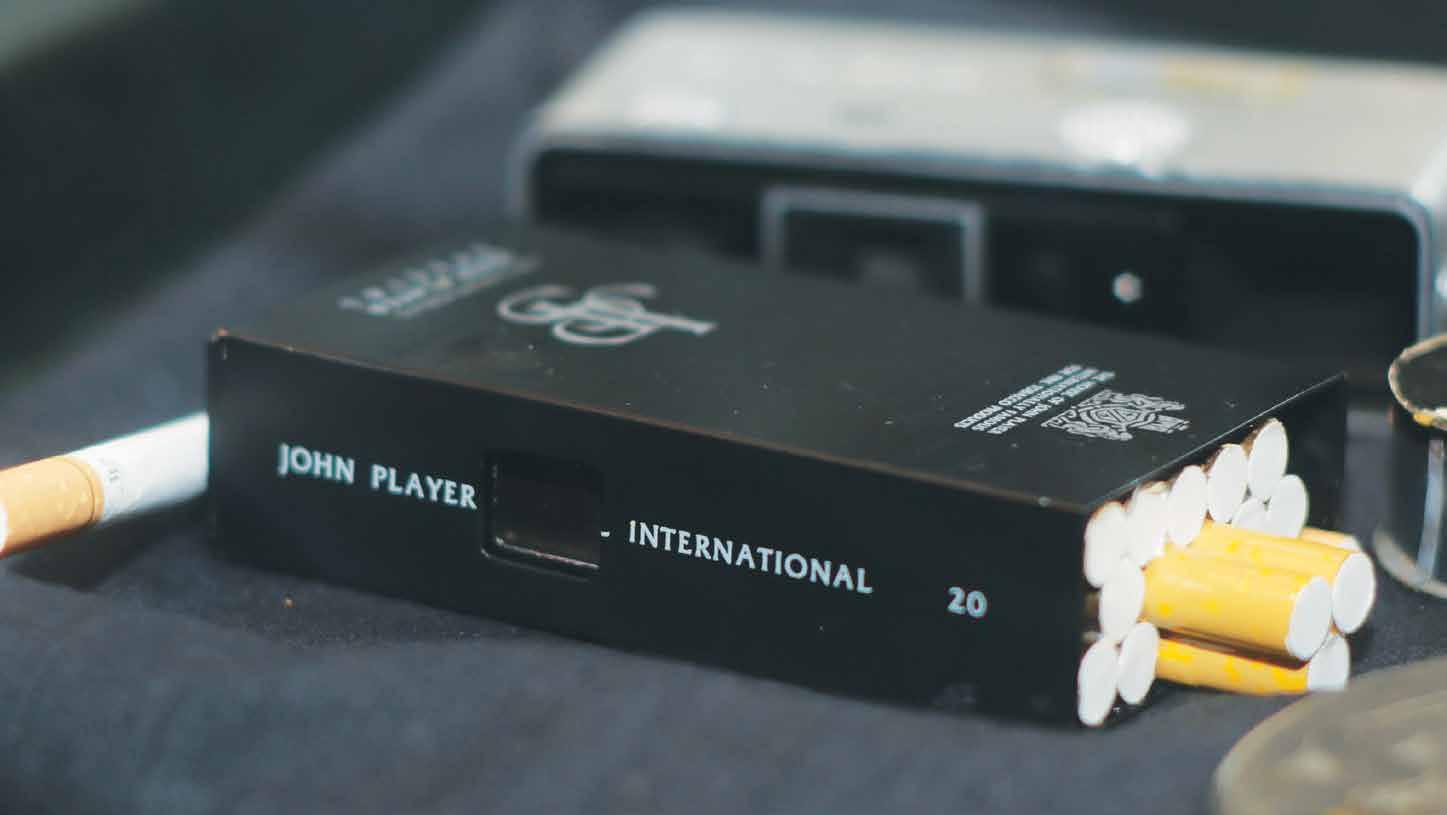
Garcia succeeded in his role as a double agent while in England, but life was hard. The language barrier made things difficult, and Garcia also had problems at home, having moved to England with his wife. She had no friends nor a job. At one point, she was close to a mental breakdown and cried to her husband that she would spill everything to someone, she couldn’t keep these secrets anymore.
A couple of days later, military police arrived at their apartment and began to beat Garcia, telling his wife that they would take her husband away for good if she didn’t keep her mouth shut. She complied. Garcia later told her that he had planned the whole incident. It marked the end of their marriage.

At its best, this made-up spy network had 27 spies working for Garcia. In reality, Garcia was the only living person in it. The information he passed on to the Nazis was always accurate and could be verified as true, but he always gave the information slightly late, so it couldn’t harm the Allied forces.
The crown of Garcia’s espionage career took place in June 1944. He had told the Nazis that the Allied forces were not trying to invade France in Normandy, but in Pas-de-Calais, where the English Channel is at its narrowest. The British armed forces had inflatable vehicles and other mock military equipment set up with trucks driving around in circles to make it seem that the plan was in motion. So when the operation Overlord started on June 6th in Normandy, the German reinforcements were critically late and far away.
After the war, "Agent Garbo" feared that the remaining Nazi sympathizers would hunt him down. So he faked his death and traveled to Venezuela under a false identity. There he lived peacefully until British journalist Nigel West found him in 1984 with the help of Garcia's nephew. West took Garcia to England, where he finally met the people he had communicated with as "Garbo" for the first time face-to-face. Juan Pujol Garcia died in Caracas in 1988.
At its best, this made-up spy network had 27 spies working for Garcia.

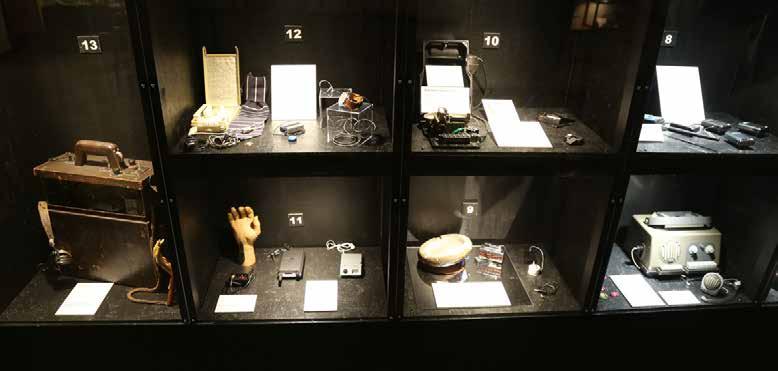
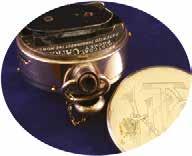
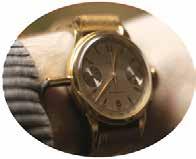

the ways and means of espionage
The world’s first spy museum in the city center introduces you to the world of real life James Bonds where a single device can change the world more than governments. World of eavesdropping, hidden cameras and microphones, secret weapons, code breaking, hacking, lock picking...
Remember to say the code “We met at the hotel” to get free AgentTest for the kids!!
Museum is open Monday-Sunday 12-18
www.vakoilumuseo.fi
Satakunnankatu 18, Finlayson



Mariankatu 40, Tampere
Emil Aaltonen museum of industry and art. The permanent collection represents Aaltonen’s life and displays some of his art collection. The exhibited artists are masters of older Finnish painting. Temporary exhibitions.


THE FINNISH LABOUR MUSEUM WERSTAS
Väinö Linnan aukio 8, Finlayson area
Tue–Sun 11 am–6 pm

www.tyovaenmuseo.fi

THE MUSEUM OF
Nootti is a brand-new political history museum focusing on transboundary history: Finnish-Russian relations, from the Soviet Union to the present day.
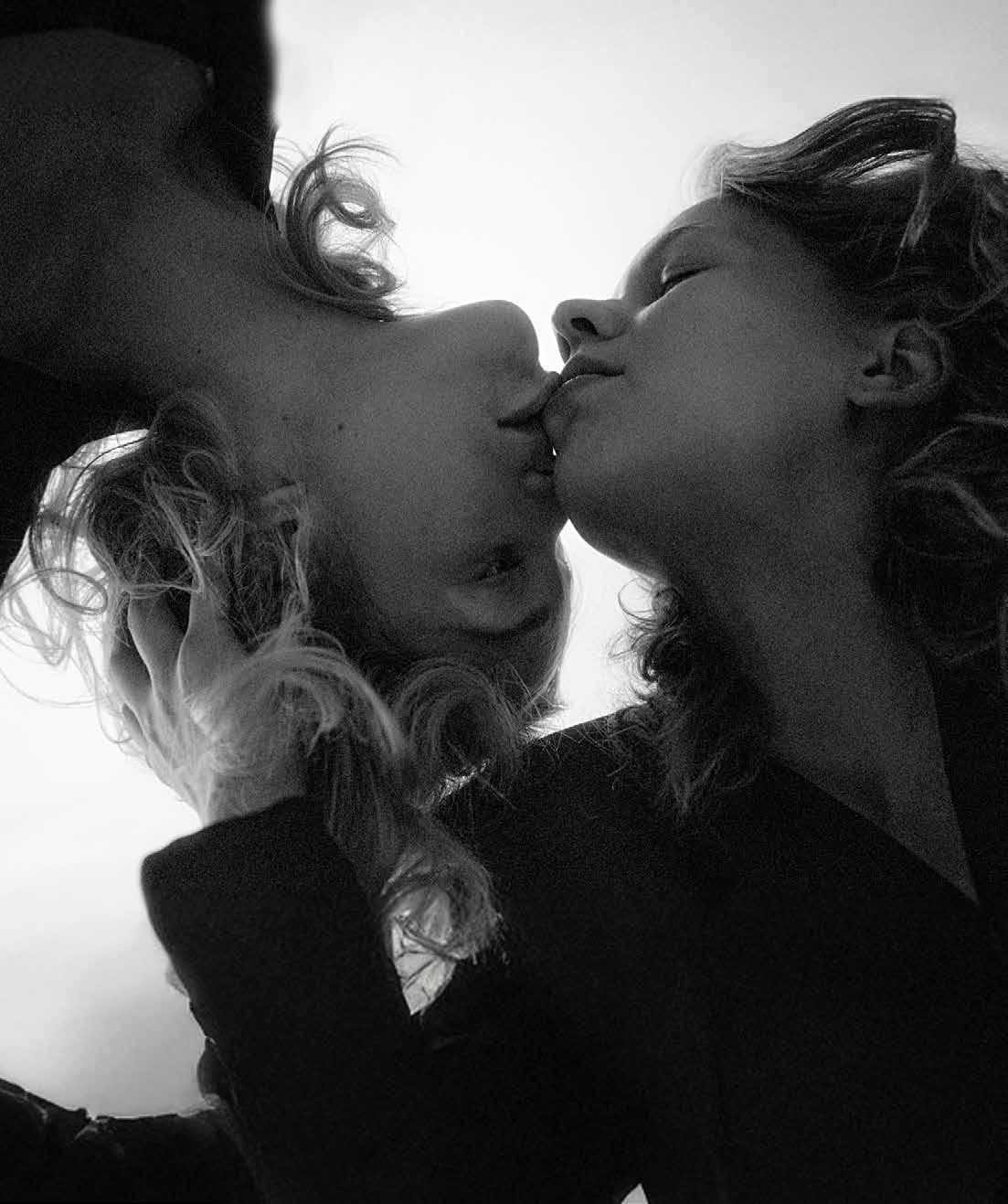
Hämeenpuisto 28, Tampere www.museonootti.fi
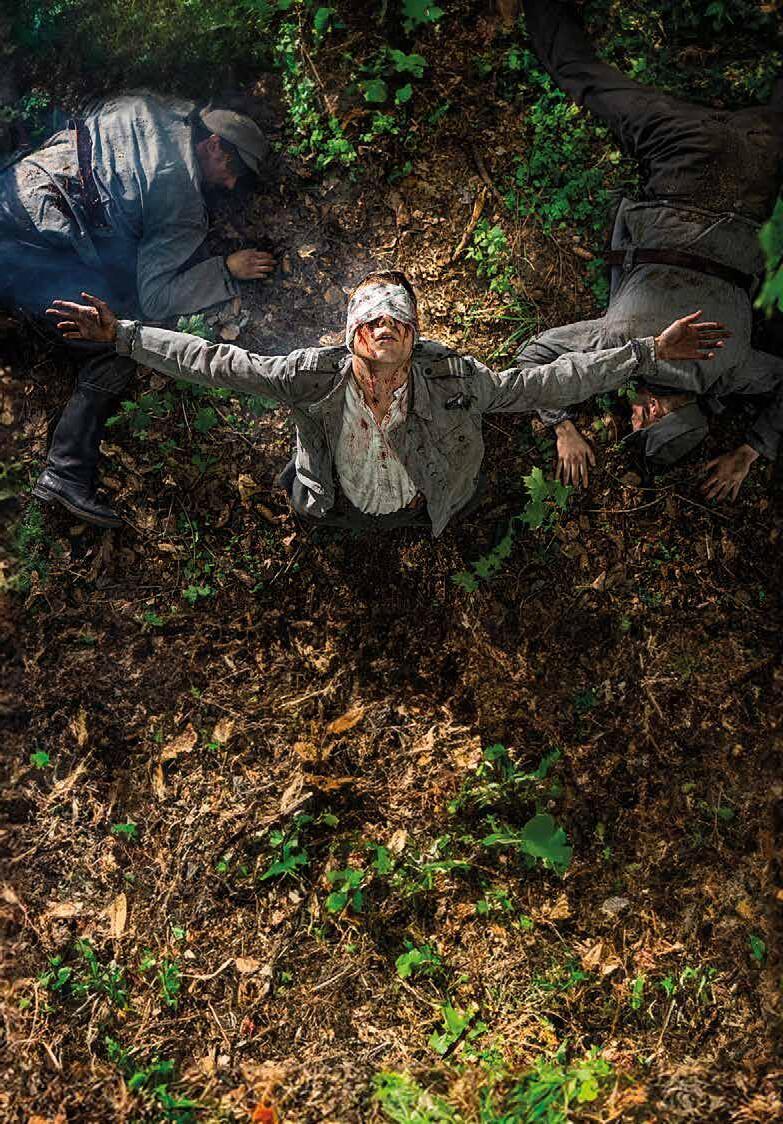

and lingonberry jam. ‘Lapin Puikula’ potatoes are grown specifically in Lapland, and are yellower, sweeter and tastier than potatoes from elsewhere in Finland. The excellent qualities of this old potato variety are a result of Lapland’s bright summer nights and short growing season, which requires that the potatoes be harvested early, before their sugar has had time to turn into starch.
Karjalanpiirakka
Karelian pasties have a rye crust filled with rice porridge. Karelian pasties are a funny-looking food, and as the name suggests, they originate from Eastern Finland. These days, however, they’ve spread throughout the country. They’re also a good food if there happens to be a picky child in the family – a Karelian pasty is generally acceptable to everyone. Karelian pasties are eaten with an egg-butter topping: a boiled egg is mashed and mixed with softened butter. This treat is often available at hotel breakfasts.
Rönttönen
A rönttönen is a northeastern version of Karelian pasties: instead of rice porridge, sweetened mashed potatoes or crushed berries are used as a filling. The word itself is quite onomatopoeic and can mean a small or clumsy object, or in some dialects, be used as a vulgar word for female genitalia – the association likely comes from the pasty’s shape.
Kalakukko
Kalakukko is another traditional food from Savo. A kukko is a baked dish with a rye crust that looks like a loaf of bread and usually contains plenty of fresh vendace and fatty side pork. Kind of a food surprise!
Ruisleipä
Finland is the promised land of rye. Finns love rye bread, in particular, which isn’t available in many other countries. Rye bread keeps for a long time and is very high in fiber, which makes it healthy. When Finns move abroad, they usually ask their friends to bring rye bread when they come to visit.
Mustamakkara

idea when it comes to brand associations. When the dish started to be called black sausage, its popularity quickly increased. Black sausage is usually enjoyed with lingonberry jam. For a complete gourmet experience, you should eat it at the market square in Tampere and wash it down with cold milk.
Paistetut muikut
Vendace is a 5–20-centimeter-long fish in the salmon family that lives in schools in lakes and is the most important commercial fish species for professional fishermen in Finland’s inland waters. While particularly common in the Finnish lake region, fried vendace can be found at every major outdoor event in larger cities these days. They are usually eaten with mashed potatoes. A more Helsinki-style version of this is fried herring, which is similarly coated in rye flour and fried.
Salmiakki
Salmiakki is Finland’s national candy. This black and strongly flavored confection is not much liked elsewhere, though it is eaten to some extent in the other Nordic countries and in the Netherlands. It’s worth giving salmiakki a chance, however. And if not as candy, you can also drink it in alcoholic form: salmiakkikossu, which is made by dissolving so much salmiakki in vodka that you can’t taste the alcohol, makes for an excellent shot! It’s so good, in fact, that when it was first launched in the 1990s, it was banned precisely because it didn’t taste like alcohol and was therefore considered dangerous by the authorities. These days, it’s back on the market. Salmiakki is made by mixing ammonium chloride into licorice.
Salmon soup was originally an archipelago dish, but today, you can find it everywhere. In addition to salmon fillets, the soup contains potatoes, carrots and leeks – and cream. It’s often eaten with saaristolaisleipä, ‘archipelago bread’, a malty rye loaf sweetened with syrup.
Tampere’s gift to the world: a black sausage that looks suspicious, but tastes good! In the ’80s, this food was still referred to as kuuma sian verimakkara, ‘hot pig’s blood sausage’, which was maybe not the best
Blueberry pie is the perfect ending to any summer meal. Finnish blueberries, or more precisely, bilberries, are small, but that makes them all the sweeter. Blueberry season usually starts in July. Finland’s ‘Everyman’s right’ guarantees that anyone can go into the forest to pick berries. In a pie, the berries really shine! s


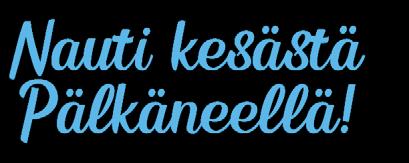
Makuja ja elämyksiä lähiruokatiloilla, putiikkeja, upeaa luontoa ja uimarantoja!


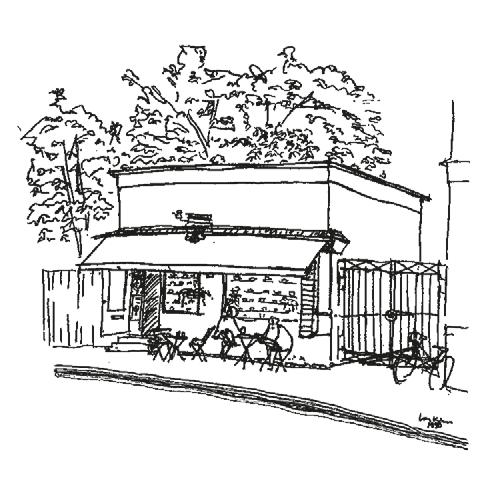
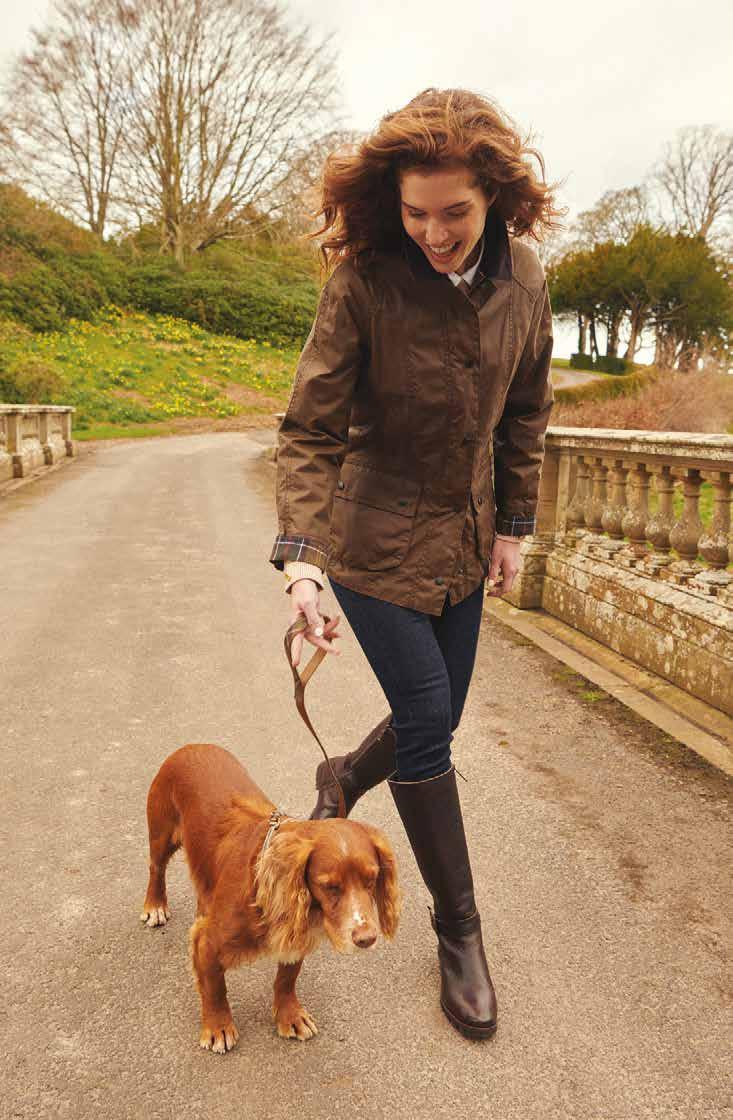
Come and visit our shop by the Laukontori harbour.
Myymme laadukkaita klassikkomerkkien vaatteita. Tervetuloa tutustumaan myymäläämme Laukontorilla.



Lovely shop with Tampere and Suomi souvenirs, Finnish design, handicrafts and clothes
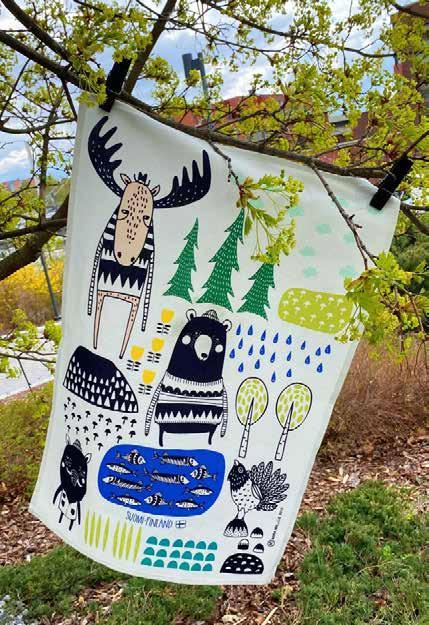
Taito Shop Tampere
Vuolteentori 2


Mon–Fri 10–18 Sat 10–16
tel. +358 50 598 4367 www.taitoshop.fi
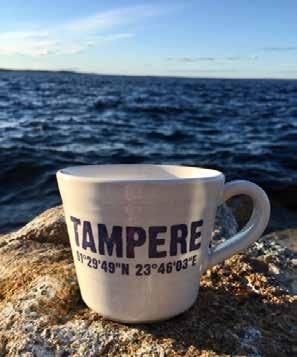
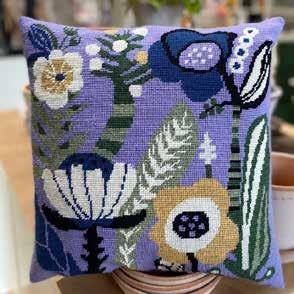


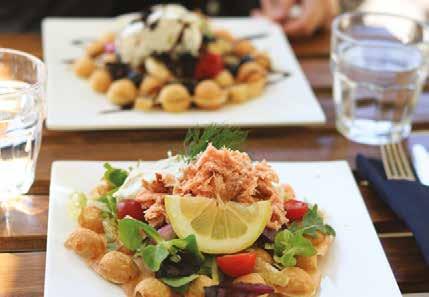





Welcome to Hatanpää Manor’s summer café! Enjoy a delightful summer day inside the historic manor or relax on the terrace, surrounded by the blooming rose garden. Savor carefully crafted sweet and savory treats and soak in the unhurried summer atmosphere.The café is open from June to early August. Check the current opening hours at www.hatanpaankartano.net.



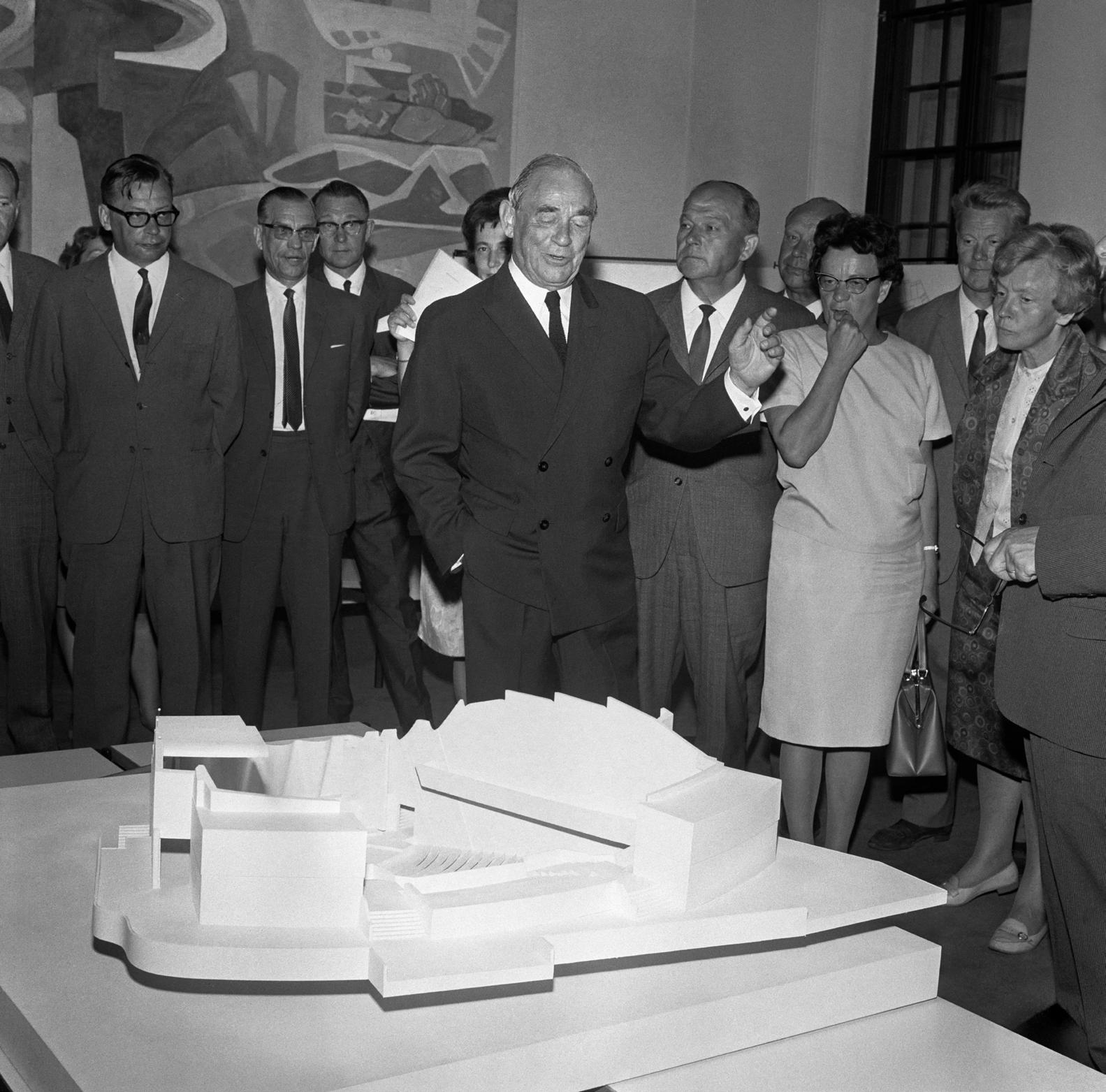
Alvar Aalto (1898-1976) is Finland’s most internationally renowned architect. His works can be found all over the world, but of course especially in Finland. Aalto liked publicity and was, in a way, a rock star of his time, so many anecdotes and stories about him have survived. Here, we’ve collected some of the best.
Although Alvar Aalto’s career as an architect was, for the most part, an exceptional success, there were also setbacks over the years. His first real functionalist-style work was the Maalaistentalo in Turku. The building included a theater that turned out to be far from functional. For example, 50 of the seats in the theater came to be known as “Aalto’s seats,” for which tickets could not be sold because nothing at all could be seen when sitting there. And that’s not all. During construction, the theater director pointed out to Aalto that the heavy concrete structures would make for terrible acoustics. Aalto wasn’t bothered by the claim. He took out a cigarette case, wrote some numbers on it, did a few calculations, and concluded that the acoustics of the theater would be great! The director of the theater later said that the most fitting punishment for Aalto for his design of the theater would be to make him work there.
The maestro must have used those same cigarette-case calculations for Finlandia Hall, whose acoustics were anything but great. Though it’s worth remembering that Finlandia Hall was built for the 1975 meeting of the Conference on Security and Cooperation in Europe, so it was the building’s acoustics for speech, not for music, that would have been important.
AalTo WaS an aVid cinephile and involved in establishing the country’s first film club in Helsinki. When there was a problem with the club’s permits, the matter ended up in court, and Aalto made such a long speech in defense of the art of cinema that the judge started doodling stick figures and finally cut off the architect’s rambling. The club was shut down anyway because it had screened the works of Russian revolutionary directors, which was too radical for the 1930s.
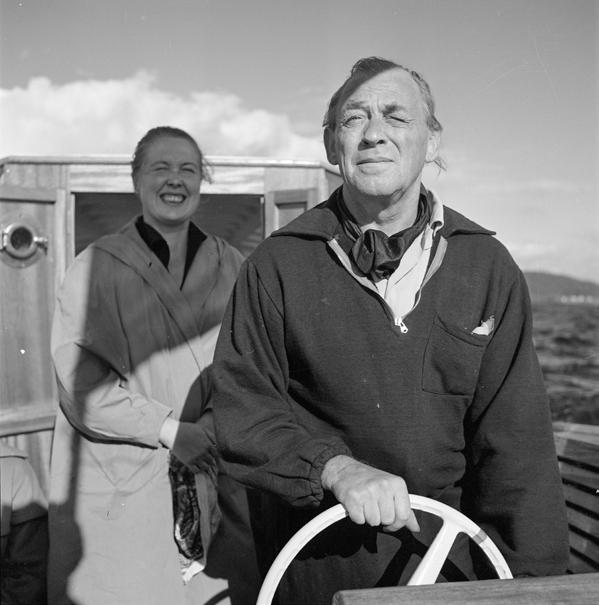
The world’s smallest Aalto vase was created in 2008, standing 600 nanometers tall. If you wanted to use it to fill a liter-sized Aalto vase with water, you would have to make ten million billion trips to fetch water. Aalto was also one of the founders of the design company Artek, which still manufactures furniture designed by Aalto at the Korhonen furniture factory near Turku. However, Aalto didn’t design everything on his own: his first wife, Aino, and his second wife, Elsa-Kaisa, known as Elissa, made significant contributions to Aalto’s success, but as is often the case in women’s history, their contributions have only been recognized in recent years.
It also wasn’t a particularly good idea to irritate Aalto. Once, at a Nordic meeting of architects, he was accused of being a communist and immediately responded by physically attacking the critic. Aalto really wasn’t a communist, and he had fought on the side of the Whites in the Finnish Civil War.
AalTo WaS a pioneer in many ways. For example, he developed an apartment building that was constructed from elements, which was practically unheard of in the 1920s. He also designed house plans for Finland’s postwar reconstruction that were standardized and easy to build – the kit homes of the time.
On the other hand, Aalto also designed very unique projects. For example, the Paimio Sanatorium is one of the most important functionalist buildings. It’s a complete work of art, for which Aalto designed everything possible himself, including the interiors and furniture.
At one point, when the hospital was being renovated, the original bent plywood armchairs, the so-called Paimio chairs, were thrown into a dump without a second thought. Collectors came to recover them in the dark of night. It was a smart move: these days, the chairs can go for thousands of euros at auction.
When Aalto traveled abroad, he always held a press conference when he returned to Finland.
In addiTion To buildings, Aalto designed furniture and household items that are still fixtures in Finnish homes. For example, every Finn knows the Aalto vase. One version of the vase’s origin story is that Aalto’s father was a land surveyor, and when Alvar accompanied him in the field as a little boy, he became familiar with topographic maps, whose contour lines eventually inspired the shape of a vase. The other theory is more straightforward: when Aalto entered the vase in a design competition, he named it “Eskimo woman’s leather pants.” The vase is supposedly the shape of stiff sealskin pants when you’ve taken your legs out of them.
In The old dayS, things had to be durable, so Aalto and furniture manufacturer Otto Korhonen tested the durability of their world-famous three-legged stool by throwing the prototype at the floor with all their might to see if it would last. It did.
When their first three-legged stool was complete, the men were extremely satisfied with the result and projected that sales could very well number in the thousands. To date, more than a million stools have been produced, with no end in sight.
In terms of volume, the second-most popular Aalto piece of furniture is a regular side chair, like those found in churches, libraries, and the like. Its genius was that the chairs could be stacked, making them easy to store when not in use.
AalTo KneW he was a good architect, and he didn’t keep his light under a bushel basket. For example, Architectural Review once sent him a questionnaire about the significance of public buildings in architecture. Aalto replied that he would rather let his buildings speak for themselves.
When Aalto traveled abroad, he always held a press conference when he returned to Finland. In addition to making known the important fact that the maestro had returned home, he usually had things to say about the latest trends in world architecture.
Aalto was also careful that everything was done exactly as he intended. When he drove past Säynätsalo Town Hall, which he had designed, he saw that neon lights had been mounted on its walls – without his permission. So he threw stones at the lights to break them.
This probably explains why the Italian marble that forms the facade of Finlandia Hall and cannot withstand the Finnish winter and warps has already had to be replaced twice now, and both times, it has been replaced with the same Italian marble that cannot withstand the Finnish winter and warps.
A li TTle pe TTine SS was apparent when Aalto named his boat “No man is a prophet in his own land” – albeit in Latin (“Nemo propheta in patria”). That certainly wasn’t at all true in his case. A few years ago, the Aalto vase was voted the country’s most beloved design object, and on the list of the most important people in the history of Finland, Aalto came in at 33, the highest-ranking architect. s






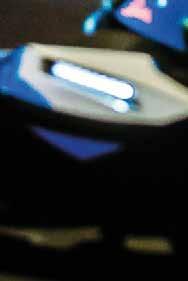

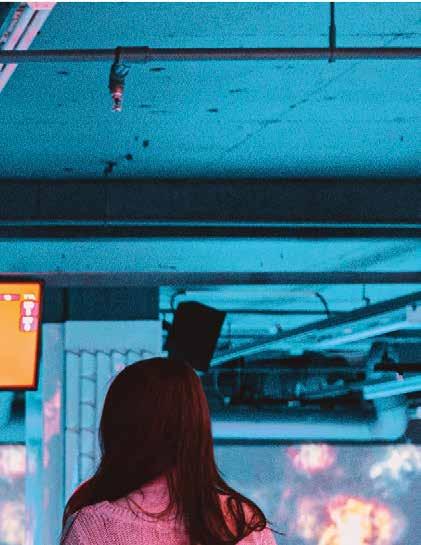
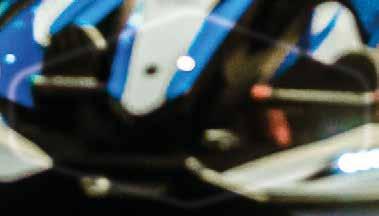



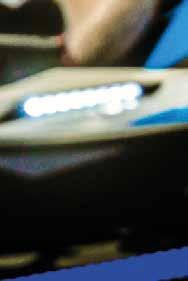
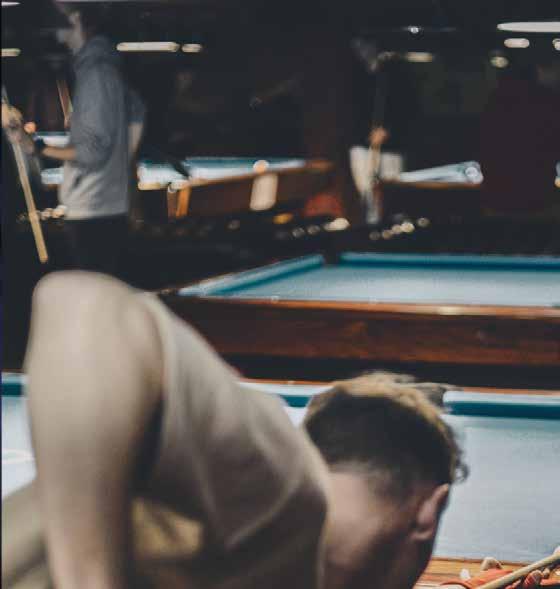



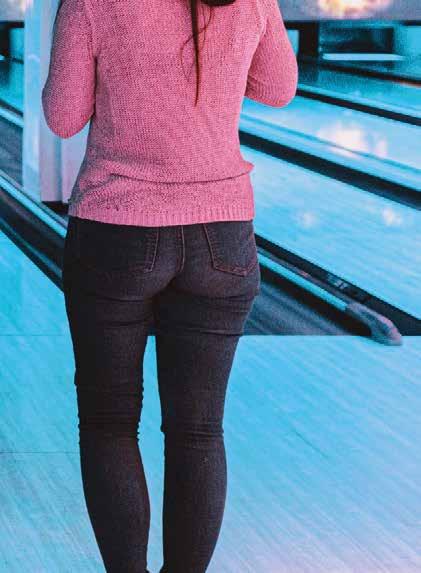






Would you like to return to your eternal youth?
Go on a hotel holiday! By yourself!
Did you know that the secret to eternal youth was actually invented a long time ago? And that this invention is available right now? In fact, you may have this miracle close at hand this very minute! Because I strongly suspect that a bottle of elixir of youth, or at least of rebellion, is hidden somewhere in your hotel room – in the fabulous and wonderfully crisp sheets, the plush towels, or those tiny soap bottles that the cleaner has arranged so beautifully on the counter just for you.
And why do I suspect this? Because I’ve experienced this miracle for myself.
I have two school-age children, and when they were younger, I would occasionally go to a hotel to write my books. I’m sure that anyone who has ever had small children understands why. I called these escapes of mine “sh*t mom” holidays because, in addition to working, the intention was to lie in front of the television with hamburger sauce on my face and take naps whenever I felt like it. Heck, yeah. Yet, against all expectations, I swear that I’ve never gotten so much work done!
During my hotel stays, I noticed that not only my physical form but also my brain reversed in age, straight back to the ’90s. I felt as if I had returned, if not to my wild youth (I barely left my room – it was coronavirus times), then at least to a youthful lack of responsibility: no cleaning, let alone cooking. The envelopes bearing electricity bills and dentist appointment reminders didn’t make it to my door, and I

Hannele Lampela is a children’s author from Loviisa, known for her stories about Princess Pikkiriikki (Itty Bitty Princess) and Paavali Pattinen (Benjamin Bateman). Hannele loves her work – especially if she gets to sleep in a hotel on a regular basis.
showed up for breakfast hopelessly late. And when I got there, what did I eat? A plateful of chocolate waffles!
After breakfast, I lazed in front of the television (okay, I suppose young people these days laze in front of their phones, but I was returning to my youth, not theirs). If I had wanted to, I could have sneaked out into the alluring nightlife of the city and come home through the back door without anyone ever catching me. Another thing I did regularly in my youth. Although back then, I used to climb out the window of my childhood home because it was a much quieter way to sneak out (yes, I was trouble as a teen, but more on that some other time).
You MighT ThinK that all this lack of responsibility would have made it more challenging to get any work done, but you’d be surprised. As I said, I’ve never written so much in just a few days! When I knew that I could work at my own pace and that the point was also to rest, I dove into my work without even realizing it. Finnish brain researcher Mona Moisala has said that you should do something restorative every 90 minutes during the workday. And because my own brain finds returning to the self-centered, housework-resistant years of the ’90s so restorative, in just a few days I ended up creating more Finnish children’s literature than I had in a long time!
A few years ago, I heard about a retired woman who sold her apartment and belongings and moved into a hotel. She took only a few personal belongings with her – only the things she needed. At first, I thought, whoa, bold move, and I wondered what life would be like without snow shoveling and cleaning days. Quite restorative, I bet! How much work would she be able to get done, if she wanted to?
I think that taking a couple of nights away, a “sh*t mom” holiday, as I call it, should be required by law, or at least be a tax-deductible work benefit. It would be for the good of Finland! If each of us could take a break from being the project managers of our own lives from time to time to live the wonderfully messy, responsibility- and bill-free life of a teenager, I think Finns’ fatigue would decrease by about 1,100 percent, and productivity would increase at the same rate. That should do something for the GDP and national debt, don’t you think? s




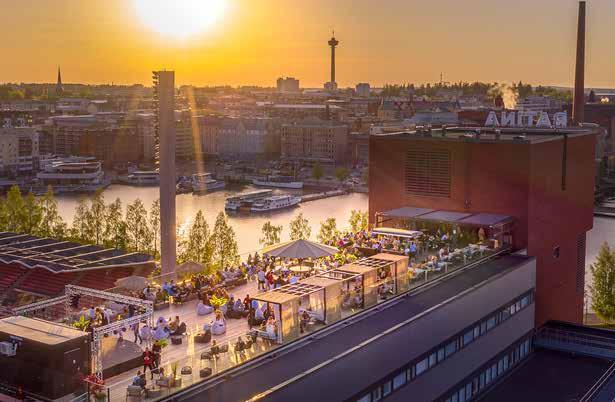
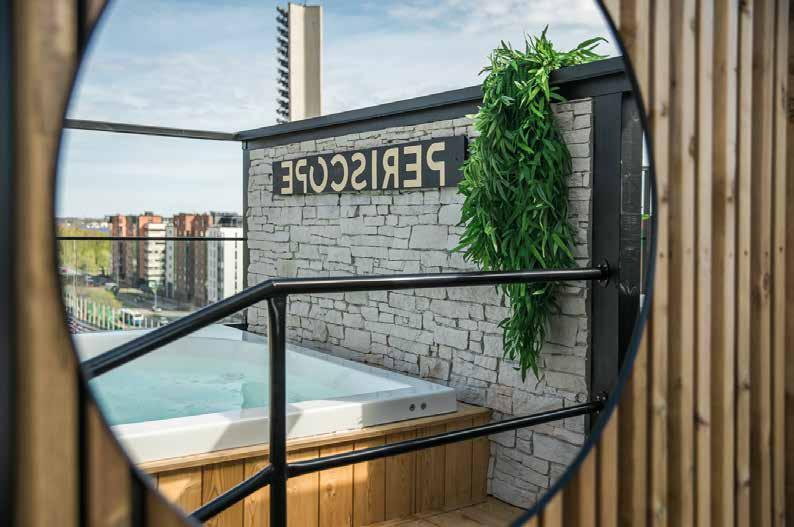


FOR THE EXPERIENCE. NOT JUST THE PARTY. @PERISCOPETERRACE @RAVINTOLAPERISCOPE
9 -25 5 Ice Hockey World Championship 2025 10 5 Skidi Scope Children’s event
31 5 Periscope’s Spring Break
4.6. DW House Pachata for couples
6 6 Elixia Terrace Yoga
11 6 DW House Pachata for couples
13 6 Elixia Terrace Yoga
14 6 Caribbean Night
16 6 Movie Monday: Forrest Gump
18 6 DW House Pachata for couples
20 -21 6 Periscope’s Mid Summer, Open SPA!
27 6 Elixia Terrace Yoga
2 7 Caribbean Wednesday
4 7 Elixia Terrace Yoga
5 7 White Party
9 7 Caribbean Wednesday
11 7 Elixia Terrace Yoga
16 7 Caribbean Wednesday
18 7 Elixia Terrace Yoga
21 7 Movie Monday: Oppenheimer
23 7 Caribbean Wednesday

25.7. Elixia Terrace Yoga
26.7. Wonderland
30.7. Caribbean Wednesday
8 8 Miss Tampere 2025 Final
18 8 Movie Monday: Mufasa: The Lion king



